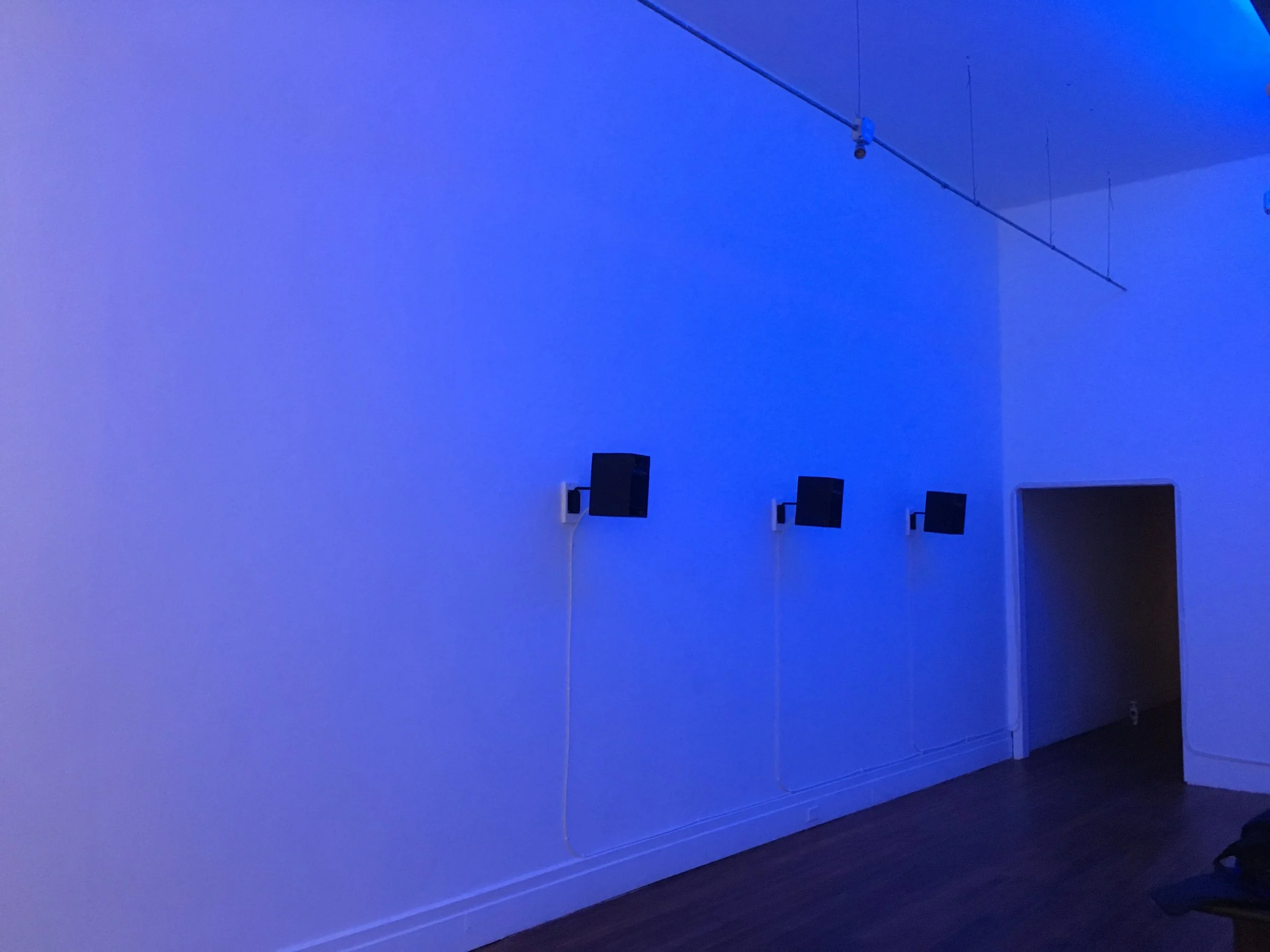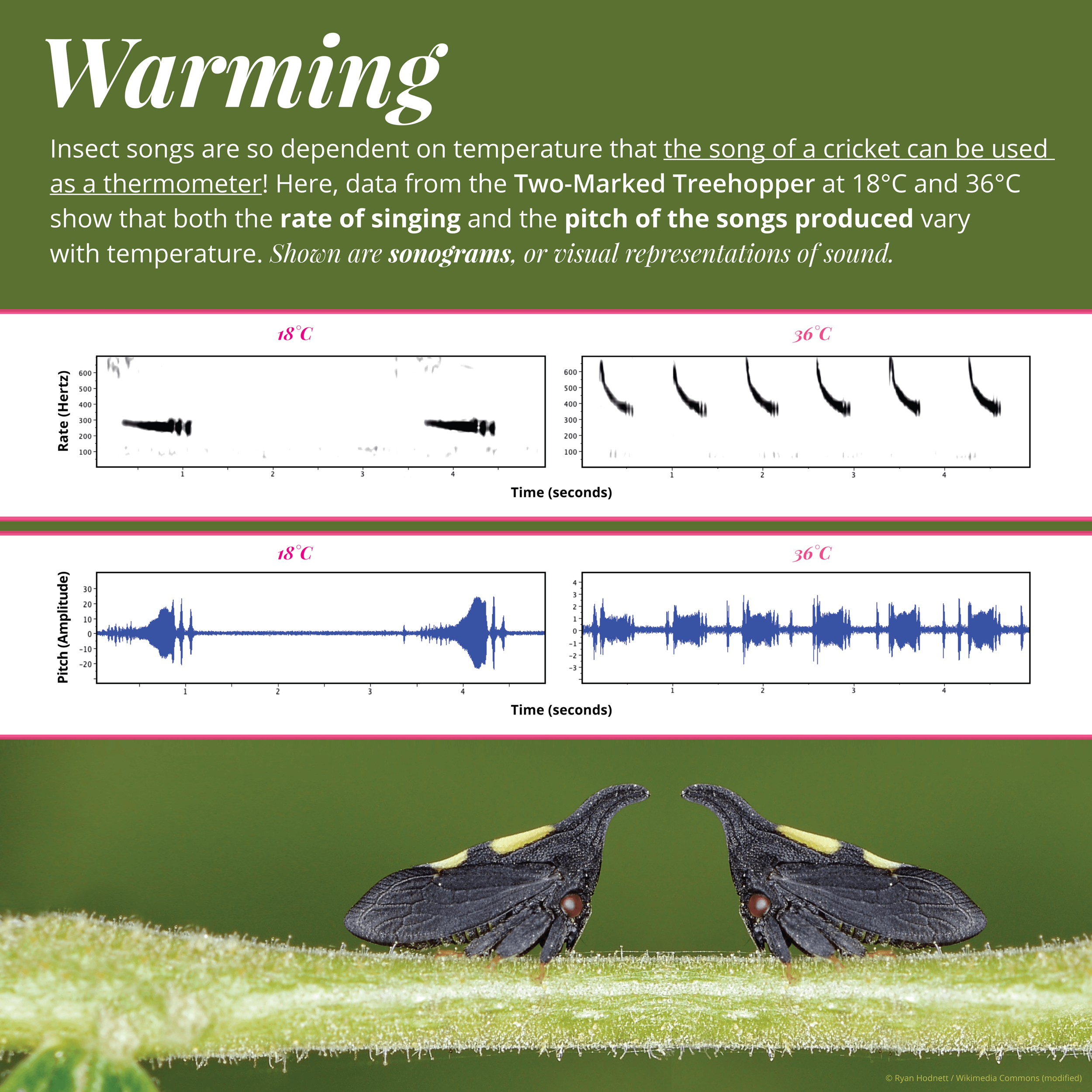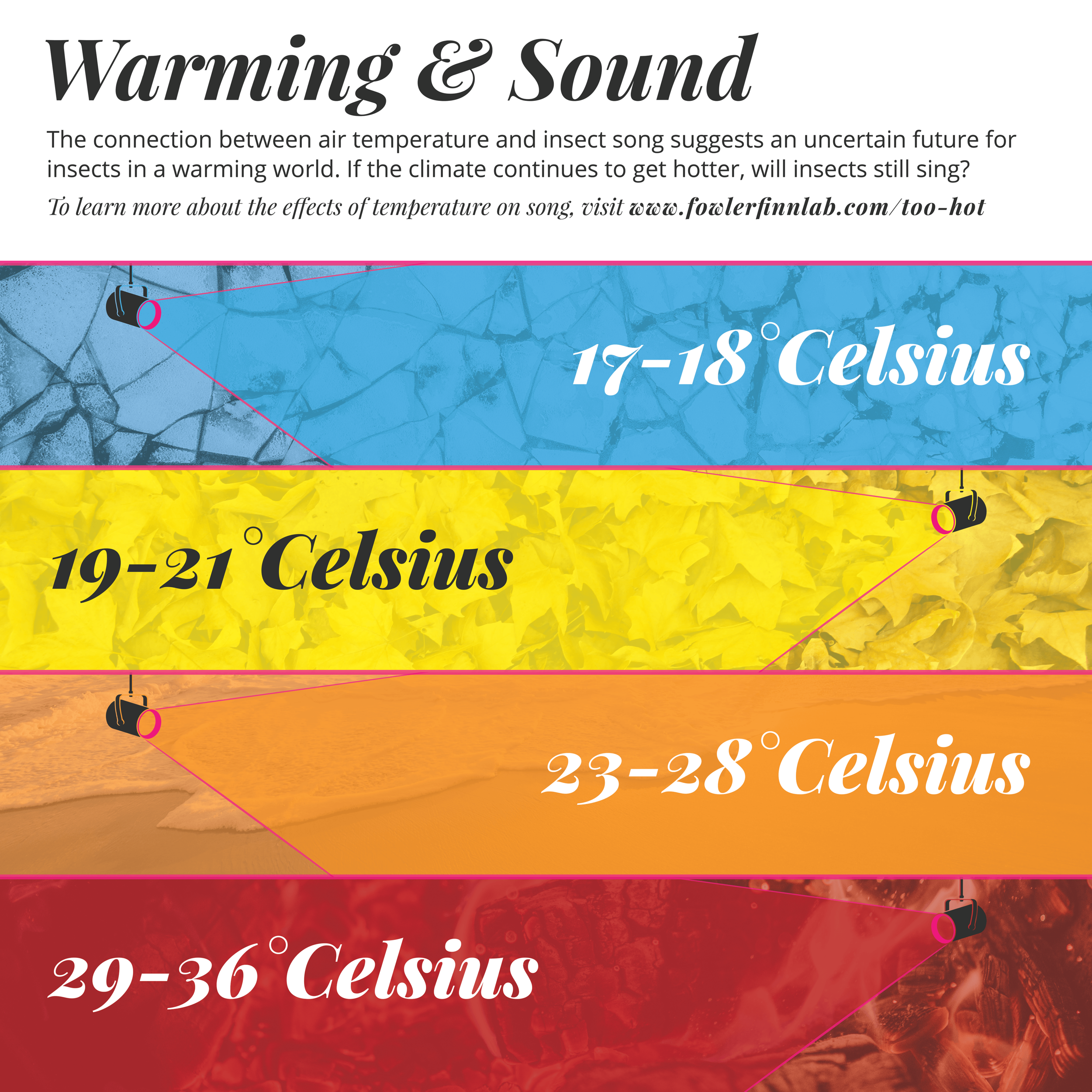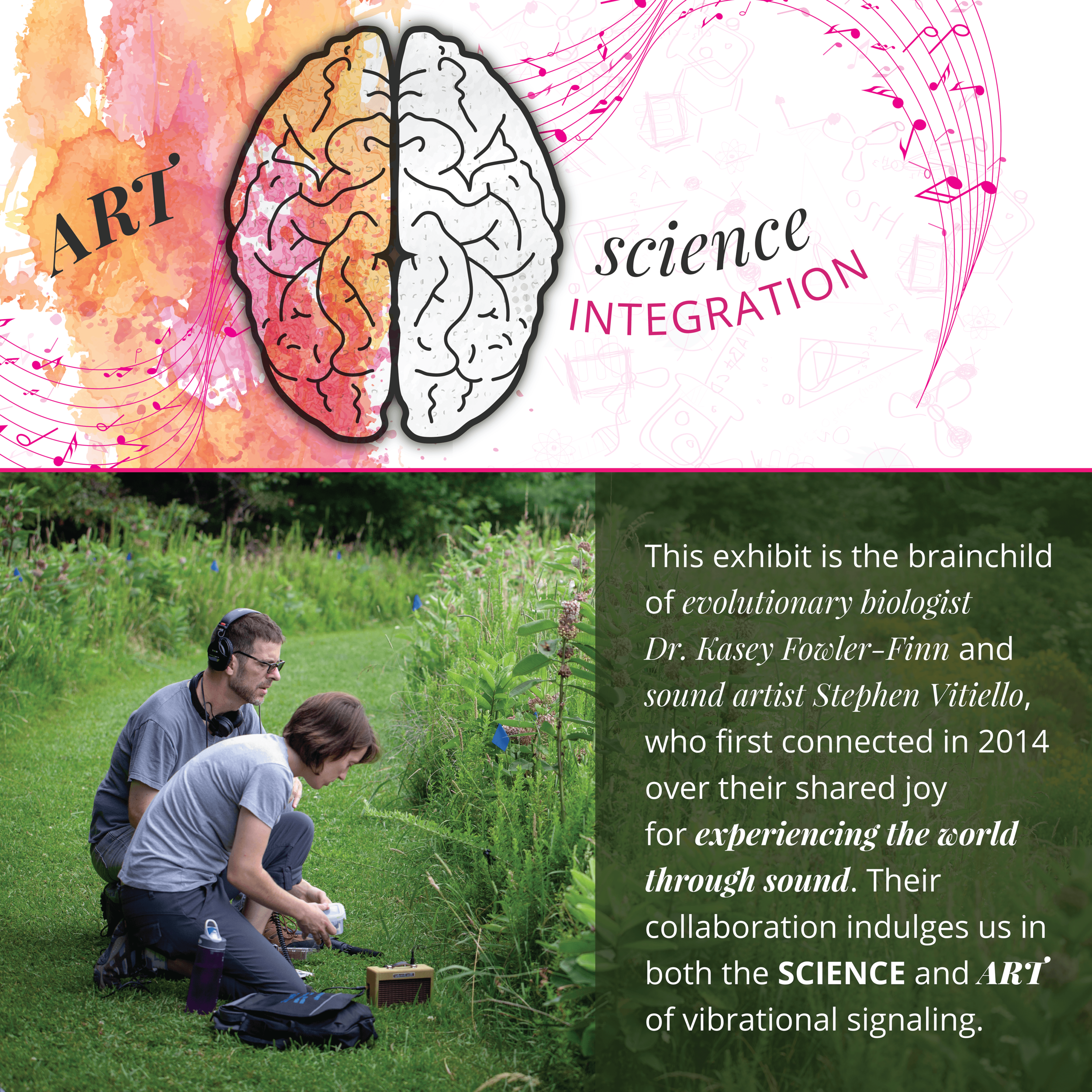SINGING AMONGST THE WEEDS | Installation
A MIND-BENDING AUDITORY EXPERIENCE
March 8th - April 7th, 2019
at the SEDIMENT gallery in Richmond, Virginia.
This sound installation and exhibition brings to life the research and studies of biologist Kasey Fowler-Finn with spatial audio compositions by sound artist Stephen Vitiello. Fowler-Finn studies how temperature variation and global warming could affect communication in insects that use vibrations to communicate, as part of research funded by the National Science Foundation.
goals:
We joined the project to help develop informational panels to guide the listener through the exhibit. Our goal was to share the significance (and prevalence) of vibrational communication in insects; to introduce the listener to climate-driven changes in communication; and tell the story of the collaboration that inspired the composition.
the project
the panels
more on the exhibit
This exhibition premieres recordings and infographics focused on unique insect sounds that travel as vibrations through plant stems, featuring the songs of treehoppers, oak treehoppers, stink bugs, ebony bugs, and Japanese beetles. The sounds heard in the exhibition are not accessible in nature to the naked ear. Rather, recordings have been captured through monitoring surface vibrations by attaching scientific devices (lasers and accelerometers) to the stems of plants, flowers, tree branches, and various weeds.
The recordings were made by Fowler-Finn and Vitiello in and around the grounds of Mountain Lake Biological Station, Pembroke, VA. Vitiello has created an immersive sound work in which sounds are grouped into four “chapters” that reflect insect vibrational songs heard within different temperature ranges — going from cool to hot. Each chapter of the sound mix is set to a color scheme in the gallery so that the listener knows when the lights are blue (for example) the sounds were recorded at a range of 17-18 Celsius. Accompanying info panels lead the listener through the biology and significance of vibrations, as well as the research that inspired the composition focusing on the role of the environment in the interaction and survival of these insects.












